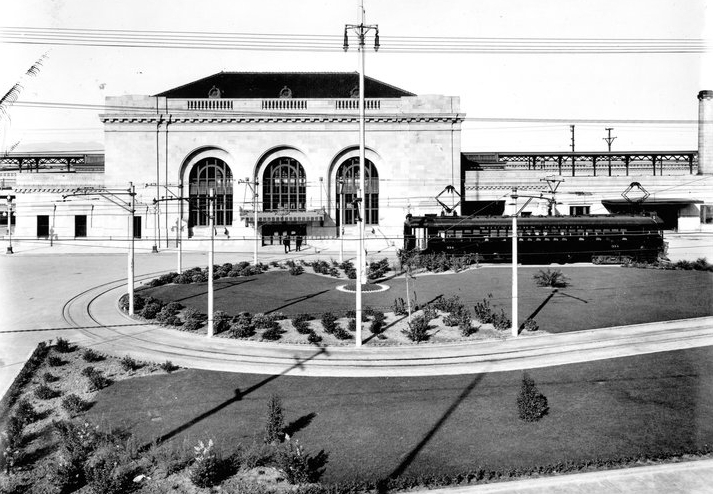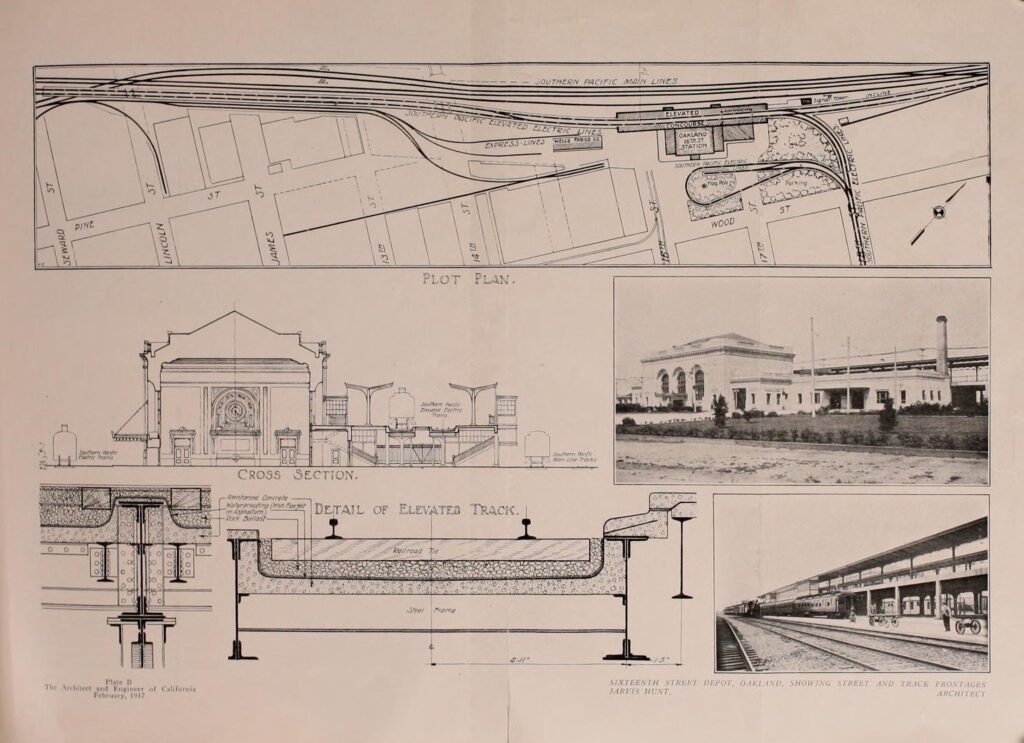16th Street Station

The 16th Street Station served as one of the main points of entry for those migrating to California by train, and a diverse and thriving neighborhood grew around the station. This building was constructed in 1912 by the Southern Pacific Railroad to replace a smaller nearby station. Note that at the time, the shoreline was just beyond the railroad tracks, about where the freeway runs now.
When Oakland was founded in 1852, lots of people were heading to California because of the discovery of gold a few years earlier. Getting here meant a long, dangerous journey overland, or a long, dangerous sea voyage. That changed in 1869 with the completion of the first transcontinental railroad, and Oakland was the western end of the line.
While some people continued on to San Francisco by ferryboat, many stopped in Oakland. When George Pullman created luxury train cars and exclusively hired Black men to serve as porters, those men and their families had to live near the train stations. These things helped lead to West Oakland becoming a mix of new immigrants from other countries and migrants from other parts of the U.S., and the heart of Oakland’s Black community. Ron Dellums, Oakland’s former mayor and congressman, and nephew of C.L. Dellums, west coast head of the Brotherhood of Sleeping Car Porters, called the station “Ellis Island for the African American community.”

As Oakland grew, racially-restrictive deeds and redlining meant West Oakland was one of the few places Black people could live, and the mix changed over the years as others moved. World War II brought in an influx of workers and soldiers, and Oakland’s Black population grew to four times its previous size, mostly in West Oakland.
The 16th Street Station was the heart of West Oakland for decades, as trains were one of the main ways people got around the state and the country. With the rise of the automobile, the creation of the interstate highway system, and later the increase in air travel, train travel began to decrease. The final blow was the 1989 Loma Prieta earthquake, which damaged the building and left it needing seismic upgrades. New stations were built at Jack London Square and Emeryville, and the 16th Street Station was closed.
Since then, the station has been used for various events, plus the filming of movies and music videos, but mostly it has sat empty, slowly deteriorating as new housing gets built around it. There have been different plans to renovate the station over the years, but none have come to fruition. People are concerned it will become the victim of “demolition by neglect” if nothing is done, and losing it would mean losing one of the most significant pieces of Pullman Porter history in Oakland. The latest hopes to renovate and preserve the station got a boost in early 2025, when the Oakland Heritage Alliance led efforts to get the station listed on the National Register of Historic Places.

Note: You can learn more about C.L. Dellums and his work on the Black Liberation Walking Tour.
There are also several episodes of East Bay Yesterday about the train station and the Pullman Porters:
- Episode 82 – “The porters were fed up”
- Episode 116 – “Everybody wants it preserved”
